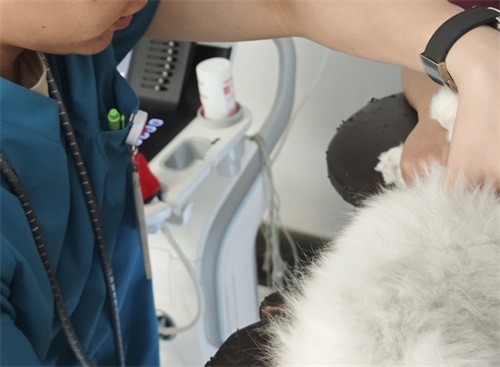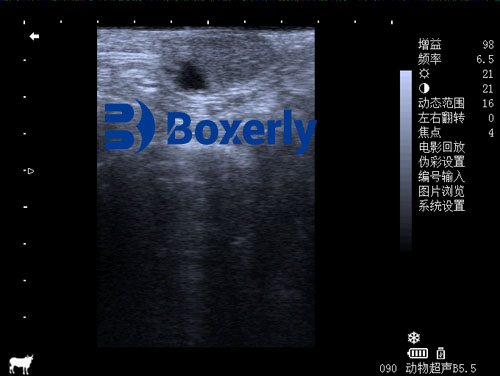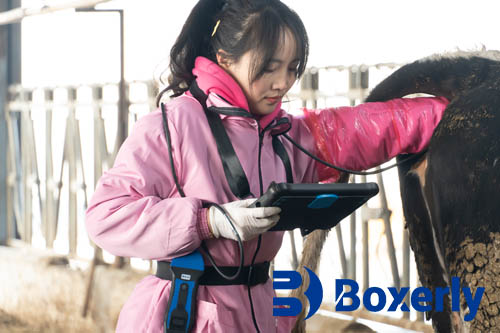Answer: No, Veterinary ultrasound does not use radiation.
As a livestock farmer, I rely heavily on veterinary imaging tools to monitor the health and reproduction of my animals. One of the most common concerns I hear from other farm owners is whether ultrasound imaging is harmful due to radiation exposure—similar to X-rays. So let’s set the record straight: veterinary ultrasound does not use ionizing radiation at all. Instead, it uses high-frequency sound waves to create real-time images of the animal’s internal structures. This makes it one of the safest diagnostic imaging methods available for animals.
What Is Veterinary Ultrasound and How Does It Work?
Veterinary ultrasound, or ultrasonography, is a widely used imaging technique in modern animal health care. It works by sending ultrasonic sound waves, typically in the range of 1.5 to 18 megahertz (MHz), into the body using a device called a transducer. These sound waves bounce off tissues and organs, and the returning echoes are used to build a live image of the internal structures.
The transducer is usually placed directly on the animal's skin with the help of a conductive gel, which ensures good contact and proper sound transmission. The machine then interprets the echoes returning from inside the body to construct visual representations of organs, muscles, tendons, or even unborn fetuses.
Unlike X-ray or CT scans, no radiation is involved in this process, which makes ultrasound safe for pregnant animals, breeding evaluations, and repeat examinations.
Why We Prefer Ultrasound on the Farm
In our daily livestock operations, we frequently use ultrasound for pregnancy checks, diagnosing soft tissue injuries, and even guiding needles for biopsy procedures. It's a non-invasive and stress-free process for the animals and offers immediate results, which is invaluable during time-sensitive reproductive cycles.
One big reason I trust ultrasound over other imaging methods is the lack of radiation exposure. Reproductive health is critical in farm animals, and we often scan the same animal multiple times over a short period. Using a technique like X-ray would introduce risks due to cumulative radiation, but ultrasound poses no such danger.

Common Uses of Ultrasound in Livestock and Large Animals
Ultrasound is incredibly versatile. On our farm, we most often use it for:
Pregnancy diagnosis in cows, pigs, goats, and sheep
Monitoring fetal development
Evaluating ovaries and uterus
Identifying muscle or tendon injuries in horses
Detecting soft tissue lesions in joints or ligaments
For reproductive work, transrectal ultrasound is especially useful in cattle and horses. We can determine ovulation timing, assess follicular growth, and detect early pregnancies—all without harming the animal or fetus.
How Does the Image Appear?
The main imaging format in veterinary ultrasound is called B-mode (brightness mode). It produces a two-dimensional grayscale image that shows the shape and texture of internal organs. The strength and timing of the returning sound waves determine the brightness of each pixel on the screen.
There are also other modes:
M-mode (motion mode): Ideal for evaluating moving structures like heart valves.
Doppler mode: Used to measure and visualize blood flow in vessels, often in cardiac exams.
All these formats are radiation-free and deliver real-time feedback, which is essential for accurate diagnosis in a live animal.

Safety and Practicality in Routine Use
Because ultrasound is non-ionizing, it doesn't alter tissue or DNA, unlike radiation-based technologies. This makes it safe for:
Pregnant animals
Repeat exams
Neonates and small animals
Animals under sedation or restraint
Additionally, ultrasounds don’t require special rooms or safety barriers, unlike radiography. In fact, I often perform scans in the barn or field with a portable machine. It’s cost-effective, fast, and safe.
Limitations of Ultrasound
Like all tools, ultrasound has its limitations. It's less effective for imaging bones or areas filled with gas, such as lungs or intestines. Bone reflects all the sound waves, making it hard to see beyond it. Similarly, gas in the intestines scatters the sound and prevents clear imaging.
Also, deep tissues in large animals can be challenging to visualize, especially if the transducer frequency is too high. We often use lower-frequency probes to reach deeper structures, though the trade-off is reduced image clarity.

Advancements in Ultrasound Technology
Modern ultrasound systems now offer color Doppler, 3D imaging, and even elastography (which assesses tissue stiffness). These advancements improve diagnostic accuracy and help us make better-informed decisions on treatment or breeding.
For example, I’ve used Doppler ultrasound to assess blood flow in a cow’s uterus after a difficult calving. Without needing any radiation or surgery, I could tell whether the tissue was recovering properly.
Ultrasound vs. X-ray: A Clear Distinction
Many farmers are familiar with X-rays and might assume all imaging involves radiation. But the differences are clear:
| Feature | Ultrasound | X-ray |
|---|---|---|
| Radiation | None | Uses ionizing radiation |
| Best for | Soft tissue, reproduction | Bones, fractures |
| Safe for pregnant animals | Yes | No |
| Real-time imaging | Yes | No |
| Field use | Yes (portable) | Less practical |
Real-Life Example from the Farm
Last spring, one of my sows wasn't gaining weight as expected during pregnancy. Using ultrasound, I detected fetal resorption, meaning the pregnancy wasn’t progressing normally. We adjusted her care early, saving both her health and future fertility. No radiation, no stress—just a quick scan and solid answers.
In another instance, I scanned a heifer’s tendon after she slipped on wet concrete. The image revealed a partial tear that wasn’t obvious by palpation. We were able to start a tailored recovery plan immediately.
Conclusion
To sum up: veterinary ultrasound does not use radiation. It’s based on safe, high-frequency sound waves and is ideal for both routine and emergency use in animals of all sizes. As a livestock farmer, I rely on ultrasound for its accuracy, safety, and convenience—and the peace of mind it gives me when managing the health and productivity of my animals.
Whether you're scanning for pregnancy, investigating an injury, or guiding a biopsy needle, ultrasound offers a radiation-free solution that's become indispensable on modern farms.
Reference for further reading:
American College of Veterinary Radiology. https://www.acvr.org
Merck Veterinary Manual – Ultrasonography Overview. https://www.merckvetmanual.com
tags:
Text link:https://www.bxlultrasound.com/ns/803.html


